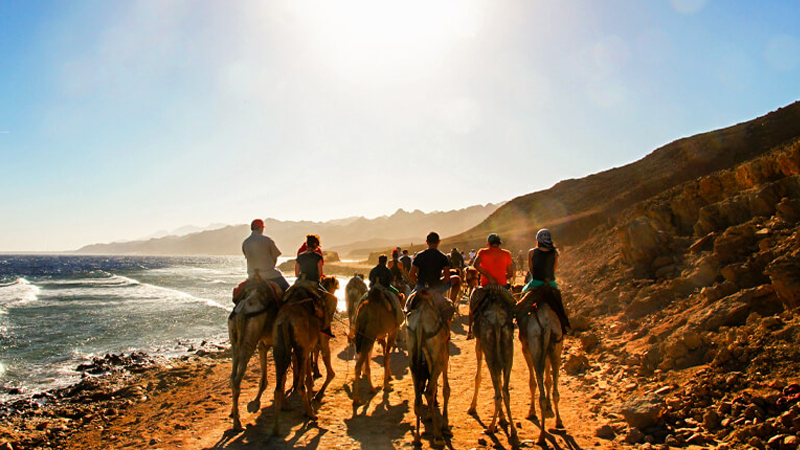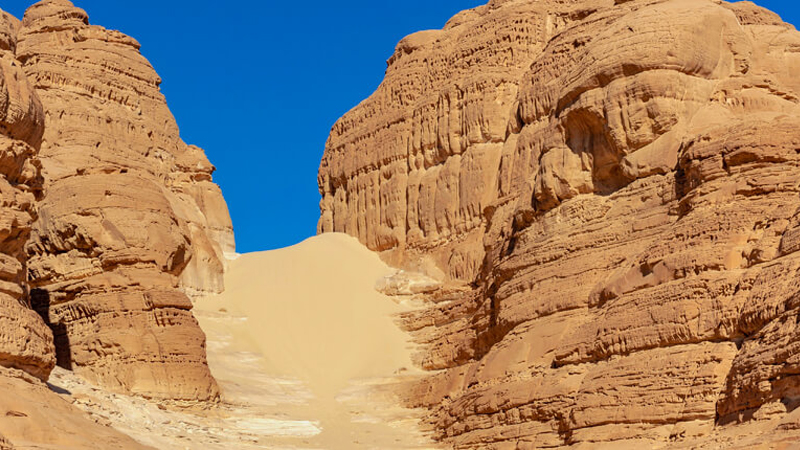Around the Sinai Peninsula with a Camera
- Can you tell me where Sinai is?
In this section, you will learn about the history of Sinai as well as what to do in Sinai.
- How safe is the Sinai Peninsula?
Ever longed to get away from the hustle and bustle of city life while yet having an abundance of things to do? If so, you’ve come to the right place.
As a result, there are two of us, and while the globe is full of places to visit and things to do, few are as captivating, peaceful, and jam-packed with attractions as Egypt’s the Sinai Peninsula.
In Egypt’s the Sinai Peninsula, formerly a land of turmoil and violence, the region is today abounding with unusual flora and fauna, vibrant aqua-marine life, coastal towns and resorts, and other Sinai attractions.
During this session, we will address some of the questions and concerns that you may have about visiting this beautiful desert oasis.
What is the location of Sinai?

The Sinai Peninsula, sometimes known as just Sinai in Egypt, is the only region of the nation that is situated on the Asian continent.
The country benefits from a strategic position between the Mediterranean Sea to the north and the Red Sea to the south, establishing a Natural Landbridge between Africa and Asia.
Sinai in Egypt is a large continent covering around 60,000 square kilometers, accounting for almost 6 percent of Egypt’s entire geographical area.
The Sinai Peninsula is divided into two major areas, the South Sinai Governorate and the North Sinai Governorate, which are both located on the southern tip of the peninsula.
The name Sinai was given to the area because of the popular idea that a mountain near the Sant Catharines Monastery represents the Biblical mountain of Sinai, which is considered to be of considerable religious significance in the Abrahamic faiths.
The climate in the Sinai Peninsula is one of the coldest in Egypt, owing mostly to the high altitude and mountainous terrain, with winter temperatures sometimes reaching minus sixteen degrees Celsius.
Sinai’s Historical Development:

In contrast to the northern area of Egypt, known as the Levant, this Land of Wonders has been a part of Egypt from the time of the First Dynasty of ancient Egypt (modern-day Syria, Leboonan, Jordan, Isreal, and Palestine).
Because of its strategic position and cultural richness, this region is constantly disputed by several nations. The region has been exposed to several different regulatory bodies.
Beginning with the rule of the ancient Egyptians, whose country was known as “Market,” which means “Country of Turquoise.” The location was regularly visited by the Egyptians in search of the rare stone Turquoise, which they found in abundance.
The Persians, under the reign of Darius the first, were the second people to rule over Sinai in Egypt, after the fall of the Pharaoh in the Battle of Pelusium.
Following the Persians came the Romans and Byzantines, who defeated the Persians in Sinai on March 22nd, 106, with little opposition from the Persians.
From 1260 until 1517, the Ottoman Empire ruled the world.
It wasn’t until 1906 that the Ottoman Empire formally transferred control of Sinai to the Egyptian Government, sometimes known as the United Kingdom since Egypt had been under British rule since 1882.
Following Egypt’s liberation from foreign domination, it nationalized the Suez Canal, which resulted in Israeli ships being barred from entering Egyptian territorial waters beyond that point. Because of the ongoing conflict between the two nations.
The Sinai Peninsula was conquered by a coalition of forces from Israel, Britain, and France in October 1956, in a move known as the tripartite attack.
The Egyptian military launched “Operation Badr” to regain Sinai after a series of conflicts and both big and small-scale operations. At the same time, Syrian forces launched an offensive to recapture the occupied Golan territory.
Finally, in 1979, a peace deal was negotiated, in which it was agreed that Israel would withdraw from the West Bank in phases, the final of which was in 1982, as part of a comprehensive peace agreement.
Currently, tight regulation is in place to safeguard the neutrality of the region and the boundaries around it.
What Should You Do in Sinai?
In Egypt’s the Sinai Peninsula, there are several sights and activities to enjoy, as well as intriguing animals both on land and in the sea, and amazing towns such as Dahab and Sharm el-Sheikh, among many others.
It is a unique opportunity to see both the beauty of the desert and its numerous geographical and biological marvels, as well as the revitalizing Red Sea with its delightfully cold waves, thanks to the Sinai attractions.
Here are some of the must-see Sinai attractions and locations to visit in Sinai, in no particular order.
The Monastery of St. Catherine:

In the Sinai Peninsula, at the foot of Mount Sinai (the biblical mountain), and next to the town of Saint Catherine, is the town of St. Catherine.
The name of this religious monument derives from the belief that the bones of a Christian martyr, Cathrine of Alexandria, were transported to Mount Sanai by angels, according to legend.
The monastery, which was built between 548 and 565, is one of the world’s oldest still-functioning Christian monasteries, which is rather remarkable considering its age.
The library of the monastery has the second-largest collection of codices and manuscripts in the world, with some going back to the 4th century.
To finish off, but certainly not least, the monastery is home to numerous rare works of art, including the world’s greatest collection of early icons.
Sharm El Sheikh is a resort town in the Egyptian province of Sharm El Sheikh.
Sharm el-Sheikh, which is located in the extreme southern region of the Sinai Peninsula, was a little town that was scarcely discernible in 1970.
Today, it has developed into an ideal vacation resort for the tired traveler, with over one million people visiting it each year.
Divers flock to this location because of the range of activities available, including scuba diving, windsurfing, and kitesurfing, as well as the opportunity to swim amid schools of colorful fish and mesmerizing coral formations.
Another option to make use of everything Sharm el-Sheikh has to offer is to take advantage of its vibrant nightlife, local Bedouin culture, and spend the night beneath a star-studded sky around a comfortable fire.
Are you not a fan of camping? You should not be concerned since Sharm el Sheik is home to several prominent hotels, like the Four Seasons and the Meridien, among others.
Ras Mohamed National Park is located in the northwestern part of the country.

Following the return of the Sinai Peninsula to Egyptian control, the Ras Mohamed Area was designated as a protected area, sheltering the marine and terrestrial animals from fishing and other forms of human interference.
The park, which is located 12 kilometers from Sharm El Sheikh on the Red Sea Riviera and provides a haven for a variety of exotic wildlife, currently contains 220 species of coral (125 of which are soft coral), 100 species of fish, 40 species of starfish, and 100 species of crustaceans, making it nothing short of spectacular and a dream destination for any animal enthusiast.
How safe is the Sinai Peninsula?
As a result of the vast, hilly terrain and a large number of conflicting cultures in the region, Sinai has long battled to preserve its reputation as a secure vacation destination for tourists. However, it is reasonable to conclude that the vast majority of the violence takes place away from tourist sites and is not directed towards tourists, resulting in the vast majority of visitors having a trouble-free trip to the destination.
In conclusion, the Sinai Peninsula in Egypt is just what the doctor prescribed for anybody looking for rest, serenity, beauty, excellent company, underwater activities, and an unrivaled travel experience.


0 Comment